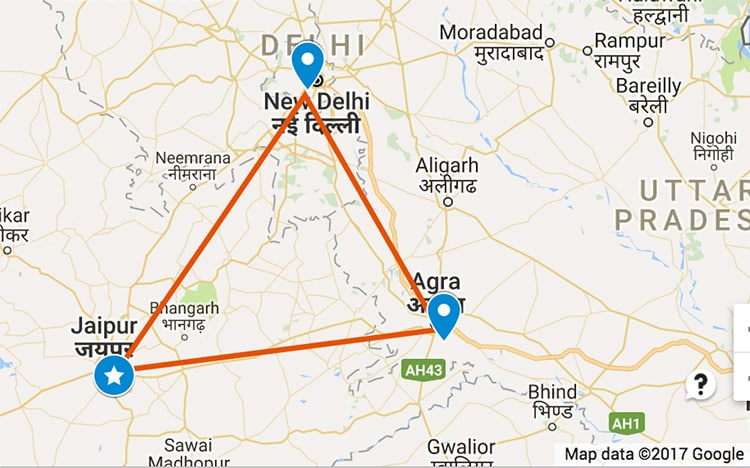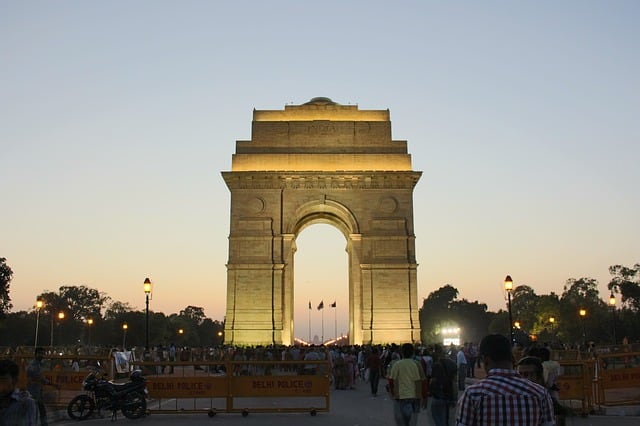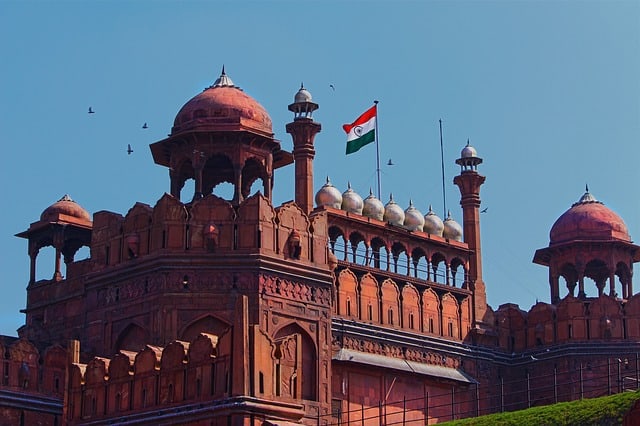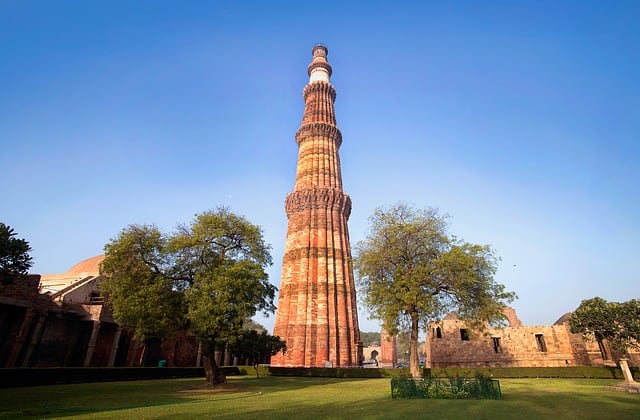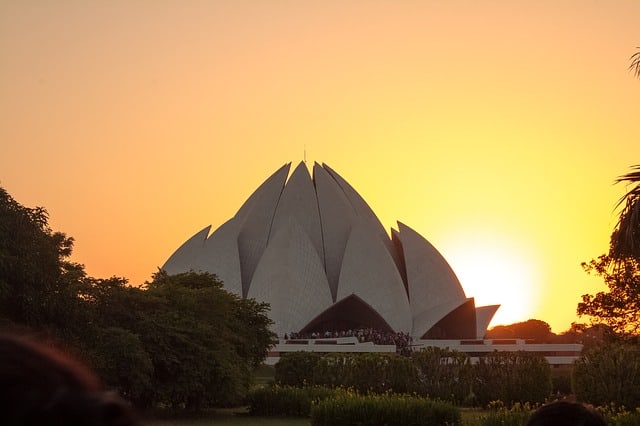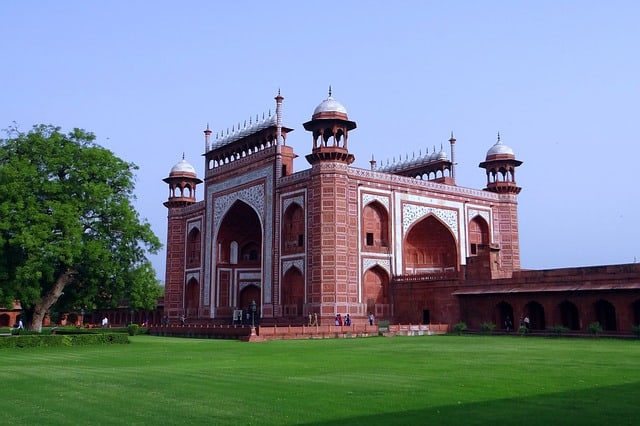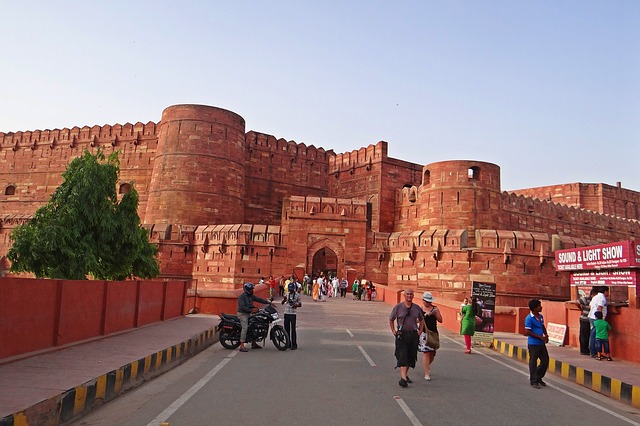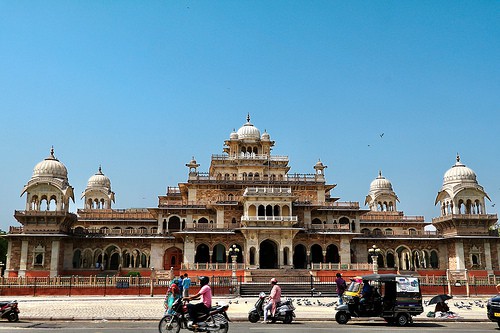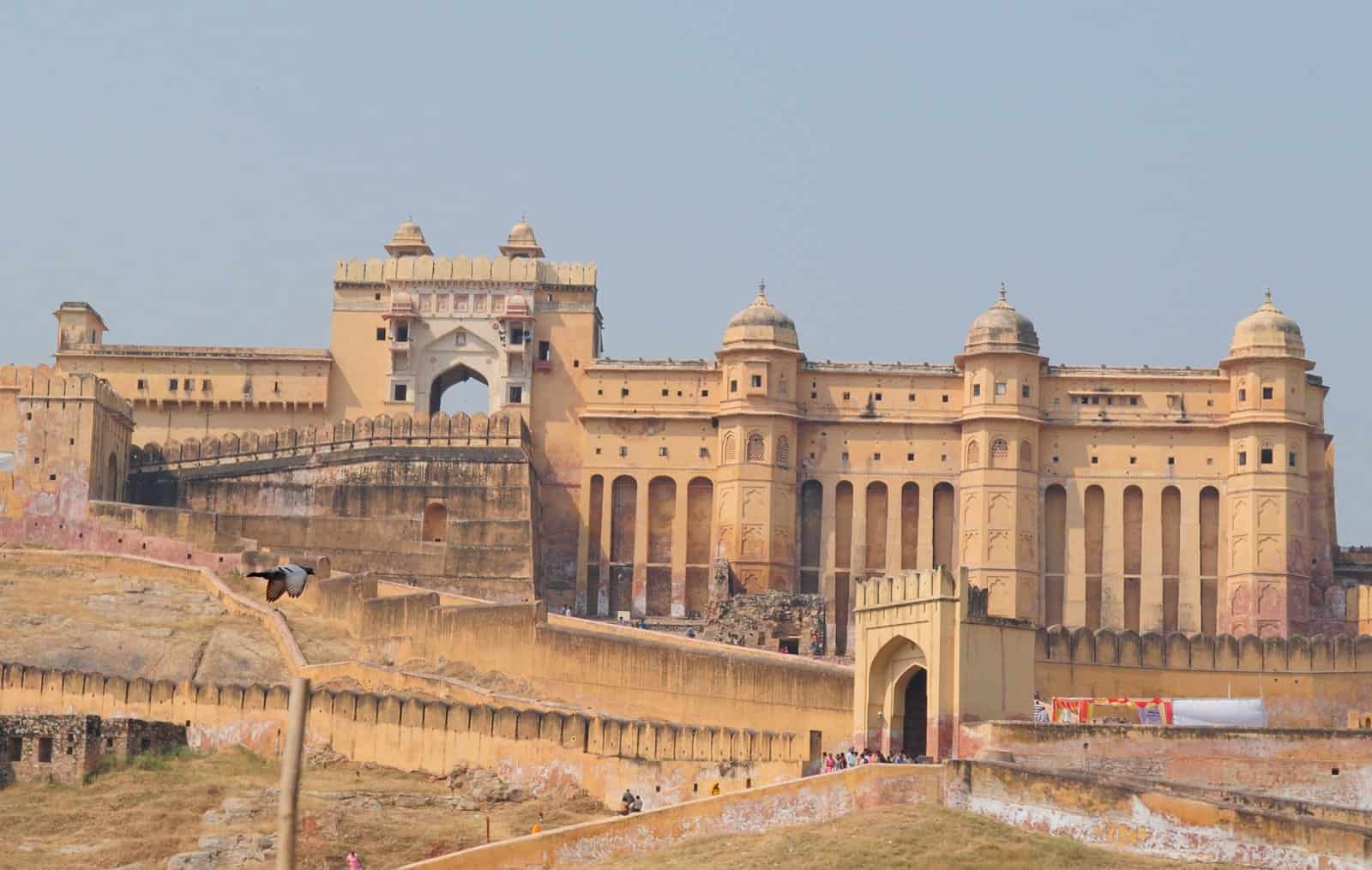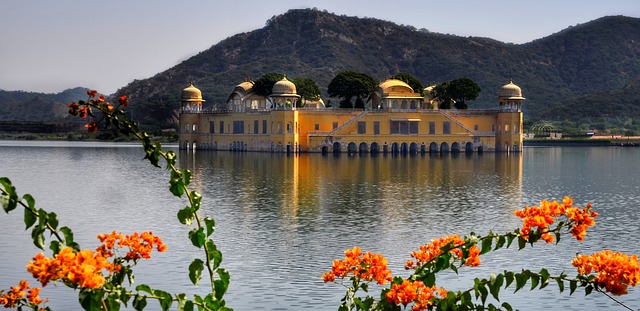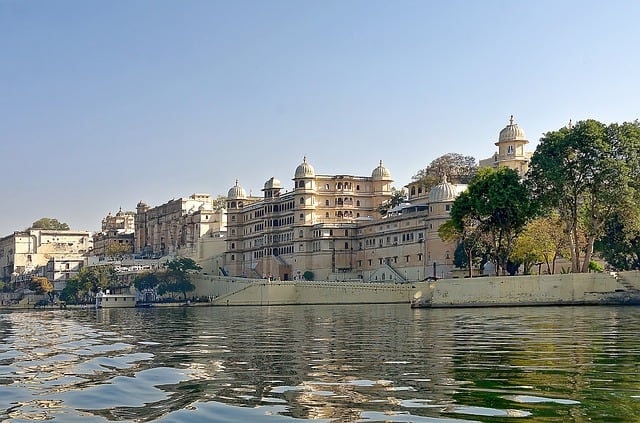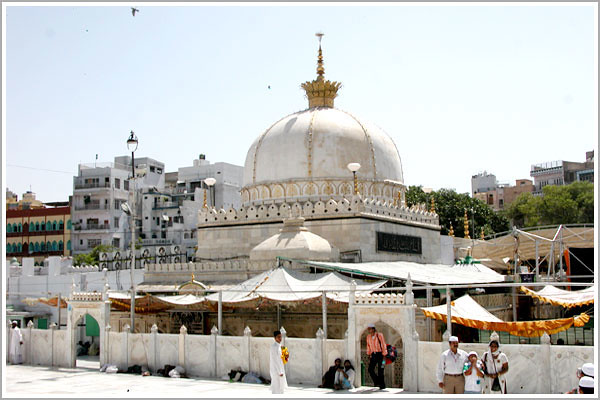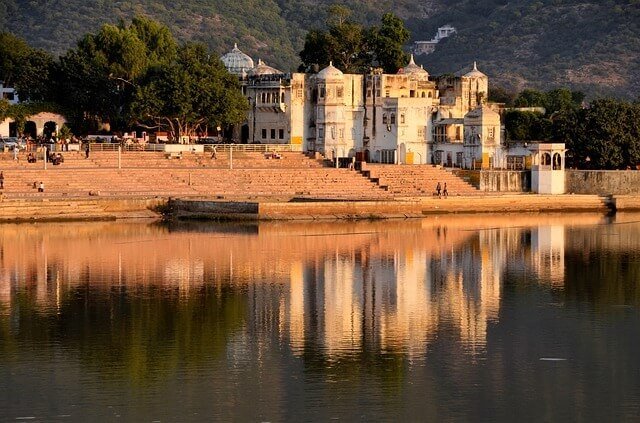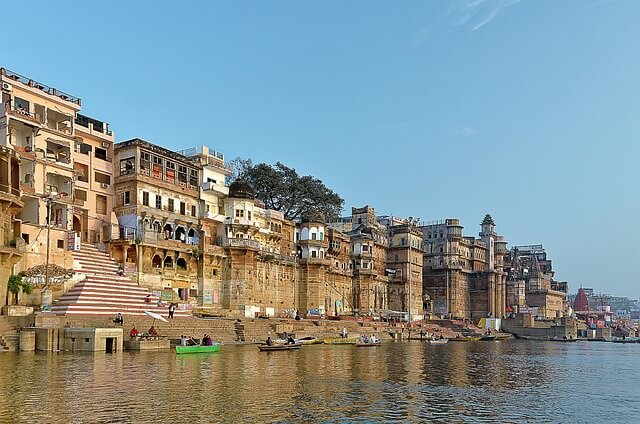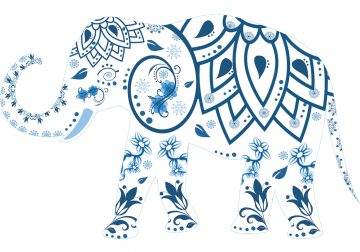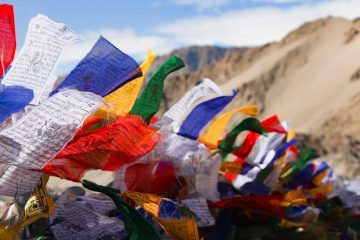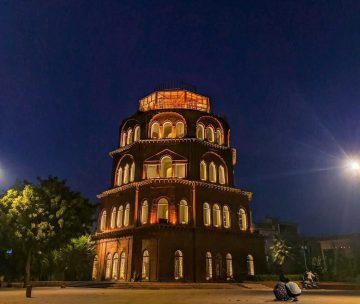The Golden Triangle is a popular tourist route that covers three historically significant cities in the North of India. The cities are Delhi, Agra, and Jaipur. Their location on the map is such that when you travel from one city to another, the journey forms a triangle.
A lot of travelers who visit India visit all the three cities in the Golden Triangle to appreciate the architecture, historical background and soak in the distinct culture each place has to offer.
Though the three cities might be comparable to an extent with respect to local cuisine and language spoken, each city has its own soul and charm which is evident as you travel through them.
In this guide on the Golden Triangle tour of India, we will detail the experience that awaits you when you step your foot here.
Delhi
The national capital of India is home to 19 million people spread over a huge area. Traversing the city is a journey in itself. You can see a perfect balance between the 21st century cosmopolitan and hundreds of centuries-old monuments within the perimeter of this great city.
Numerous landmarks, shopping, and lip-smacking food are some of the many reasons why you should begin and end your trip to Delhi in the Golden Triangle Tour.
Places to visit in Delhi
India Gate
Also known as All India war memorial is the iconic monument of India. Built to honor more than 83,000 martyrs of the first world war, the architecture of this monument is phenomenal.
Red Fort
The Red Fort is one of the finest monuments of Delhi, which was the primary residence of Mughal emperors that ruled India until the 18th century. King Shah Jahan built it to commemorate the shifting of the capital to Delhi in the 16th century.
Qutub Minar
This UNESCO World Heritage Site is 73 meters tall, made of red stone. Qutubudin Aibak built it.
Jama Masjid
Located in Old Delhi area, Jama Masjid is one of the oldest and the largest mosques of India built by Mughal emperor Shah Jahan in the 16th century.
Pic courtesy: Irwin Scott
Visit in the evenings during sunset as the night falls, visit any of the nearby lanes to gorge on some of Delhi’s best food. You will not leave the place without being stuffed to the brim.
Rashtrapati Bhavan
Formerly known as Viceroy’s house, Rashtrapati Bhavan is the official residence of the President of India. This huge mansion includes many Mughal gardens, many guest rooms, offices, and parks.
Jantar Mantar
Built by the Rajput King Maharaja Jai Singh II, Jantar Mantar is one of the ancient astronomy observatory centers in the world. It has very antique equipment that people used to observe and predict the movements of planetary objects. Situated on the parliament street, Jantar Mantar is one of the most interesting attractions in Delhi.
Lotus Temple
A major landmark in Delhi known for its huge and magnificently built lotus-shaped architecture, this is a house of worship for Bahai faith.
Humayun’s Tomb
Bega Begum, the wife of Mughal emperor, built Humayun’s Tomb in the 16th century after 9 years of his death. Made of red stones, this brilliantly built monument is a combination of Mughal and Persian Islamic architecture.
Connaught Place
Connaught Place is the modern Delhi’s center for all commercial activities and businesses. Today alongside the office space for multinational companies, you’ll also find shops of many premium brands from all over the world, making it also a popular destination for shopping.
Agrasen ki Baoli
Pic courtesy: lensnmatter
Agrasen Ki Baoli is a historic step well located in Hailey Road near Connaught Place in Delhi. There’s a possibility that Rajput king Agrasen built it. It consists of 3 levels, each embodying a unique kind of architectural design.
Delhi has plenty of other such magnificent landmarks. Check out this Delhi Travel Guide from Talk Travel for all the information that you will need to plan a visit here.
Agra
Your next leg of the trip has to be Agra. The Taj Mahal is the jewel in the crown of all the monuments in India. Mughal Emperor built this pearly white mausoleum. It stands proud and exudes an aura that no other monument in the world has. Shah Jahan commissioned the construction of the Taj Mahal as a symbolic expression of love to his dear wife Mumtaz Mahal upon her death in the year 1631. Taj Mahal is one of the Seven Wonders of the World and rightly a UNESCO World Heritage Site.
Location
Taj Mahal is approximately 222 km away from New Delhi, so you will need around 3 – 4 hours by road or by train. Though the Taj Mahal makes for a good one-day trip, it is good to stay overnight as viewing the Taj during sunrise is an experience in itself.
Best time to visit the Taj Mahal
The best time to savor the beauty of the Taj is during sunrise as the sun radiates an orange glow in the sky. The Taj Mahal looks spectacular than its usual self at this hour of the day.
For more information, check out this detailed blog on the Sunrise tour of the Taj Mahal.
The layout of the Taj Mahal
Appreciating every element in the Taj Mahal complex is the best way to savor this grand monument. Everything about the Taj Mahal, the two complexes flanking its sides, the garden, and the gateway are symmetrical. There was absolutely no room for error and the attention for detail in this aspect is worth applauding.
The Southern Gate or The Main Gateway
This is referred to as Darwaza-i-Rauza or ‘gate of the mausoleum’ which is one of the main elements of this monument. The gateway is made of bricks covered with red sandstone. There is Arabic calligraphy bordering the doorway which is are quotes from the Quran calling the visitor to enter the Garden of Paradise.
There is a set of eleven little domes on each side of the gateway, totaling 22 little white domes, signifying the precise number of years it took to construct the Taj Mahal.
Char Bagh or the Garden
The garden is 300 square meters in dimension. Even the garden, if you view it from above, is divided into 4 pieces by 4 calm water bodies. These 4 waterways represent the sea of water, wine, milk and honey which signify paradise as mentioned in the Quran.
The Mosque on the Western side
Used for prayer, the mosque faces the direction of the holy city of Mecca. Additionally, there lies a small stone enclosed space of 19 ft by 6.5 ft, which had served as a temporary grave where the remains of Mumtaz Mahal were kept for some time when they were first brought to Agra, until they finally found an eternal place of rest inside the beautiful mausoleum built in her precious memory.
The Guest House on the Eastern side
The guest house is also called as the Naqqar Khana, Mihman Khana, or the Assembly Hall. It is believed that the rest house was built to provide a ‘jawab’, which translates to ‘answer’, as it balances the architectural symmetry and harmony of the whole structure.
The cynosure of everybody’s eyes – The main mausoleum
Now coming to the main aspect of this blog and the whole travel itself which is the Taj Mahal meaning ‘Crown of all Palaces’ in Persian. It stands tall at 73 m, raising 7 m from the gardens on a plinth. Each minaret is 43 m high to emphasize the beauty of the spherical dome.
The four minarets at each corner of the Taj Mahal are not built at an exact 90° to the level of the ground, rather built a few degrees slightly outwards from the main dome.
Inside the mausoleum
The interiors of the Taj Mahal houses the cenotaphs of Shah Jahan and Mumtaz Mahal. The actual burial chambers of Shah Jahan and Mumtaz Mahal are under the ground just below the cenotaphs which are not in view.
There is a very delicate marble screen or jali inlay which surrounds both the cenotaphs. This intricate design on the rock is equivalent to a fine piece of jewelry. The marble is perforated with precious stones to have an ornamental look interlaid with flowers and leaf designs.
The exteriors of the mausoleum
The mausoleum has four sides with chamfered corners. Each of these corners has pilasters with designs which make for a good optical illusion. Do not miss out on this fun eye trick.
There are Quranic verses on the mausoleum, with Jasper inlaid into marble and has thuluth script. The texts refer to themes of judgment: of doom for nonbelievers, and the promise of Paradise for the faithful.
For more detailed information about how to visit the Taj Mahal, its history and the layout of this great monument, check out this Taj Mahal travel guide from Talk Travel App.
Other places to visit apart from the Taj Mahal
Agra Fort
Agra Fort is a UNESCO World Heritage Site. Locals also call it the Red Fort of Agra. It is around 3 km away from the Taj Mahal. Visit this 16th-century monument to understand the historical relevance of this place.
After Shah Jahan’s son Aurangzeb deposed his father and restrained him in the Agra Fort. It is believed that Shah Jahan died in Muasamman Burj, which had a view of the Taj Mahal. Agra Fort is a palatial red-sandstone and marble fortress, which was built between 1565 and 1573 on the banks of the river Yamuna by Akbar, the Mughal emperor, and grandfather of Shah Jahan.
Akbar’s Tomb
Akbar’s tomb is around 16 km away from the Taj Mahal and has a Mughal style of architecture with red sandstone as its theme. Akbar’s tomb is not as glorious in its grandeur compared to the tombs of Shah Jahan and Mumtaz Mahal. This tomb for Akbar was built by his son Jehangir between 1605–1613.
Tomb of I’timād-ud-Daulah
Fondly called as Baby Taj Mahal for its slight resemblance in tourist circles, this tomb is often regarded as a draft of the Taj Mahal.
Pic courtesy: David
The mausoleum was commissioned by Nur Jahan, the wife of Jahangir, who was the fourth Mughal Emperor who ruled from 1605 until his death in 1627. Nur Jahan built this tomb dedicating it to her father, Mirzā Ghiyās Beg, who had been given the title of I’timād-ud-Daulah.
The materials used in the construction of this tomb is similar to that of Taj Mahal. The walls are made of white marble which is adorned with semi-precious stones.
Jaipur
The third leg of the trip which will mark the completion of the Golden Triangle Tour is Jaipur. People also call this culturally rich city, the Pink City.
While Delhi and Agra had Mughal influence in its history and architecture, Jaipur boasts of royalty, forts, palaces, and lakes all built in a style unique to the state of Rajasthan. This was a land of the valiant ruled by warrior kings.
Places to visit in Jaipur
City Palace
This palace complex will leave you astounded with its intricate design and attention to detail in its construction. The seat of the Maharaja of Jaipur, it is still a royal residence. The palace complex has courtyards, garden, and buildings which is typical in Rajasthani architecture. Visit Mubarak Mahal, the Armoury, Diwan-i-Khas, Diwan-i-Am Art Gallery, Pitam Niwas Chowk, and Chandra Mahal.
Amber Fort
Visit the 500-year-old Amber Fort, also known as Amer Fort which is just 11 km outside Jaipur. The Raja Man Singh built the Amber Fort in the 16th century. The fort is made of marbles and sandstone. It looks magnificent with the Maota Lake reflecting the colors of the fort.
Hawa Mahal
An iconic landmark of Jaipur is the Hawa Mahal or the Palace of the Winds. It has a honeycomb structure, built in 1799 by Maharaja Sawai Pratap Singh of the Kachhwaha Rajput dynasty.
Pink and red sandstone makes the Hawa Mahal. The construction is wide and Royal women used it as a viewing area. The latticed windows facilitated the royal women to watch street festivities and observe city life while remaining out of the view of the public.
Jal Mahal
The Jal Mahal feels like a slice of Udaipur in the center of Jaipur. The palace is in the middle of the Man Sagar Lake in Jaipur city. The best time to visit it is during dusk, as the evening sun lights the sky golden orange.
Jal Mahal is a five-story palace. From these 5 floors, 4 get submerged in water. When the water level is low, the lower floors are visible.
Jantar Mantar
Jantar Mantar was built in the 18th century. It is an architectural marvel as there are many instruments used in astronomy and the world’s largest stone sundial. This sundial can measure the time of day, accurate to half a second.
Other places to visit in Jaipur
Jaipur is a thriving city bustling with tourists who visit to appreciate the grandeur and soak in the ambiance that it has to offer. You should also visit Jaigarh Fort, Nahargarh Fort, Sheesh Mahal, Mubarak Mahal, and Sisodiya Rani Bagh.
Combining other important tourist landmarks in the Golden Triangle Tour
There are a lot of tourist hot spots in the trail of the Golden Triangle and also nearby. These cities are equally enchanting and add a good mix of distinctiveness to your trip with respect to its offering.
Udaipur
Fondly known as the City of Lakes due to the innumerable lakes that decorate this royal city, Udaipur is 393 km away from Jaipur. Udaipur is a picture postcard destination with the shimmering Lake Pichola and numerous palaces in and around the lake. It is famous as one of the honeymoon destinations in Rajasthan.
Places to visit in Udaipur
City Palace
This lakeside palace on the banks of Lake Pichola is nothing less than flamboyant. You will easily spend a good 4 -5 hours exploring the palace and you won’t even know how time flies.
Lake Pichola
It is an expansive artificial freshwater lake having the Lake Palace and the Jag Mandir.
The Lake Palace, also called Jag Niwas is a white marble palace shining like a white pearl in the vast azure lake. This was the royal summer palace before but now a 5-star luxury hotel managed by the Taj Group.
Lake Palace, Udaipur. Pic courtesy: sukla senai
You can visit the Jag Mandir or the Lake Garden Palace only by boat. Take the boat from the Bansi Ghat jetty next to the Lake Palace in Udaipur. The palace complex is so elegant that is a favorite spot for destination weddings for the rich and elite.
Ranthambore National Park
Ranthambore National Park is 155 km from Jaipur. It is the best place to sight the majestic Royal Bengal Tigers which roam the jungles and other local wildlife in this region like the leopard, crocodile, wild boar, sambar, sloth bear, hyena, langur and more.
Ranthambore Fort is a UNESCO World Heritage Site which lies within the National Park. The park used to be the hunting grounds for the Maharajas of Jaipur.
Ajmer
Nestled in the Aravalli Mountains, it is Rajasthan’s most important site in terms of Islamic history and heritage.
The Ajmer Sharif Dargah is a Sufi shrine which has the grave (Maqbara) of the revered saint, Khwaja Muin-ud-din Chishti, who founded the Chishtiya order, the prime Sufi order in India.
Pic courtesy: Zakir Naqvi
Ajmer is also a significant center for the Jain religion which has temples like the amazing golden Ajmer Jain Temple and Nareli Jain Temple.
Pushkar
Pushkar is famous for temples and the camel fair that happens during November every year. It is about 150 km southwest of Jaipur. It is a deeply religious site among all the destinations in Rajasthan.
Places to visit in Pushkar
The Pushkar Lake provides the perfect ambiance of peace and utmost tranquility away from the crowded streets of Pushkar.
The Brahma Mandir (Brahma Temple) uses marble and rocks for its construction. It was built during the 14th century, near the famous Pushkar Lake.
The Pushkar Camel Fair is held every year in the month of October and November. Thousands of camels, goats, horses, and cattle are traded in this livestock fair. The fair is so colorful that it attracts many visitors from across the world. Rural families shop at the handicraft stalls full of bracelets, clothes, textiles, and fabrics.
Varanasi
Located 600 km from Agra and 850 km from New Delhi, Varanasi is a historic city, regarded as the spiritual capital of India. It is one of the best places to find pious Hindus worshipping devoutly by immersing themselves in the holy Ganges and offering prayers. Varanasi boasts of more than 2,000 temples which confirm the significance of this holy city for Hindus.
The best way to explore Varanasi is on foot by walking along the ghats and to experience the chaos that is on display here. Or take a boat ride down the river and observe the activities on the ghat from a distance. This is a great photo opportunity too.
While you are at it, witness the Ganga Aarti that takes place every evening upon sunset. You will be enchanted by the sights and sounds of the occasion. Priests performing the puja hold heavy, multi-tiered brass oil lamps and chanting Sanskrit shlokas to the rhythmic beat of drums. The whole place glows orange-red and the reflection of the light in the flowing river will surely infuse some of the spirituality that fills the air.
Pic courtesy: P K Gupta VNS
Varanasi is a place to spend an evening during dusk to observe people and to contemplate the surroundings on the steps of the ghats along the gently flowing Ganges. If you are a foodie, then the street food has to be experienced here. The variety of chaat on offer here is so huge that you might want to stay here for more than a day if you want to taste them all.
Khajuraho
While Rajasthan was full of royal palaces, lakes and forts, this heritage city in Madhya Pradesh, 650 km from New Delhi is a timeless beauty with a number of Hindu and Jain shrines. Traveling to Khajuraho is like visiting an open-air exhibition of art eternally etched on stone.
Pic courtesy: Chiew Loo
Khajuraho boasts of the finest temple art in the whole of India which is evident in the Khajuraho Group of Monuments having Hindu and Jain temples. There is a long list of temples each brimming with pride for the architecture, the intricate stone sculpting, and having idols of various Hindu deities.
Kandariya Mahadeva Temple, Nandi Temple, Devi Jagadambi Temple, Chaturbhuj Temple, Vishvanatha Temple, Duladeo Temple, Western Group of Temples, Javari Temple, and many more will take your breath away.
India
India is an interesting medley of experiences. Traveling more than a hundred kilometers away from any city unravels the diversity of this land and its people. Though the north of India is not the representation of the whole of India, the Golden Triangle Tour is a great way to introduce yourself to a myriad of experiences that you are bound to encounter in your journey through this great country.
We wish you a safe and happy trip!

